At the heart of The Roots is a unique collection of historical bartending artifacts – from vintage shakers and mixers to first editions of iconic mixology books. It’s a tribute to more than 200 years of cocktail art that gives every drink served at our bar an extra dimension – of history, passion and tradition.
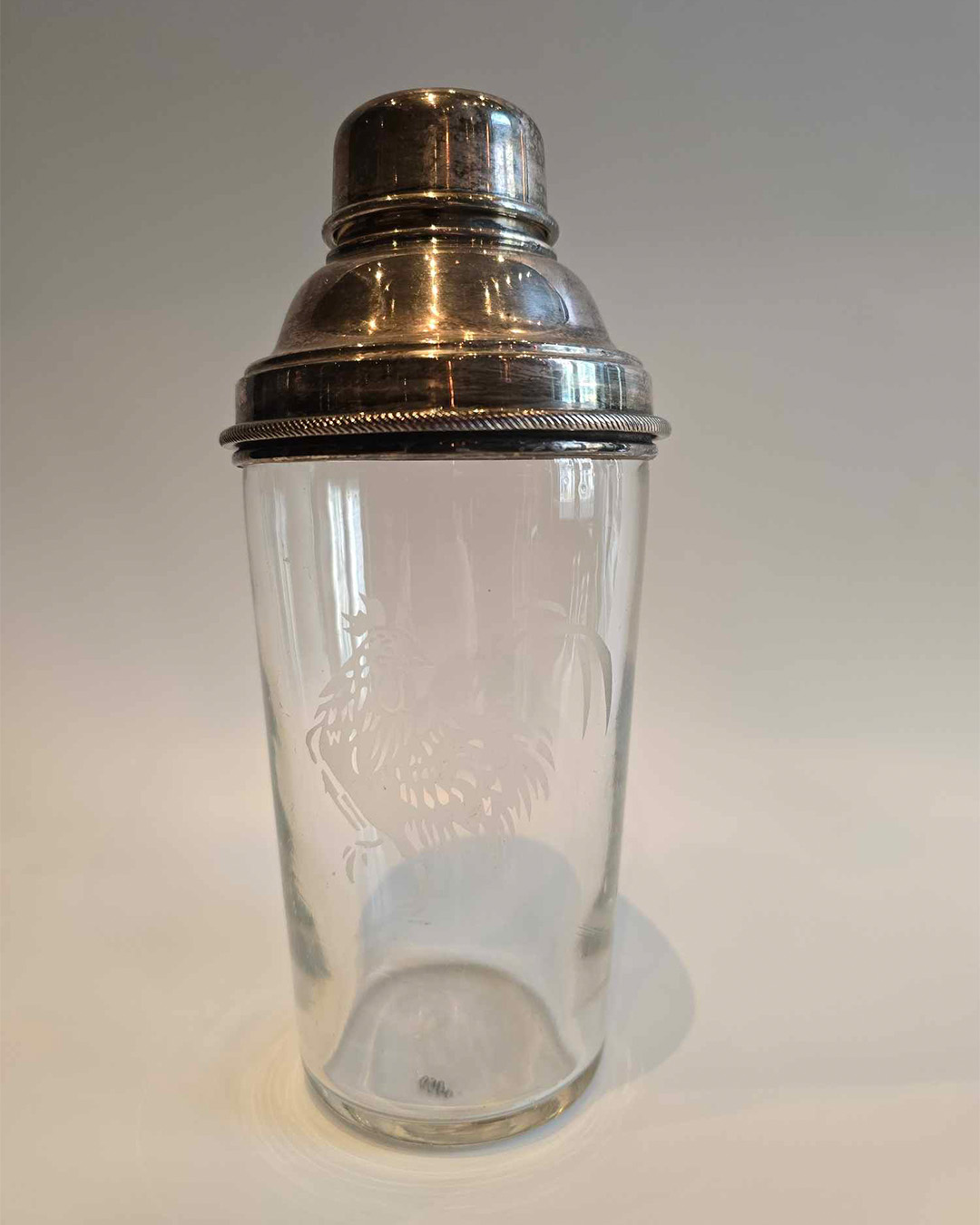
An English cocktail shaker consisting of a glass and a metal overlay with a strainer and a stopper. It was created in the 1930s by the esteemed and well-known English company James Dixon and Sons, which was located in Sheffield. A rooster, the global symbol of cocktails and cocktail bars, was engraved on the glass.
English cocktail shaker with a crystal glass and a Sterling silver overlay with a strainer and stopper. Made in the 1930s, it is a beautiful example of combining crystal and silver elements. Engraved floral ornaments and geometric patterns are characteristic of crystal shakers.
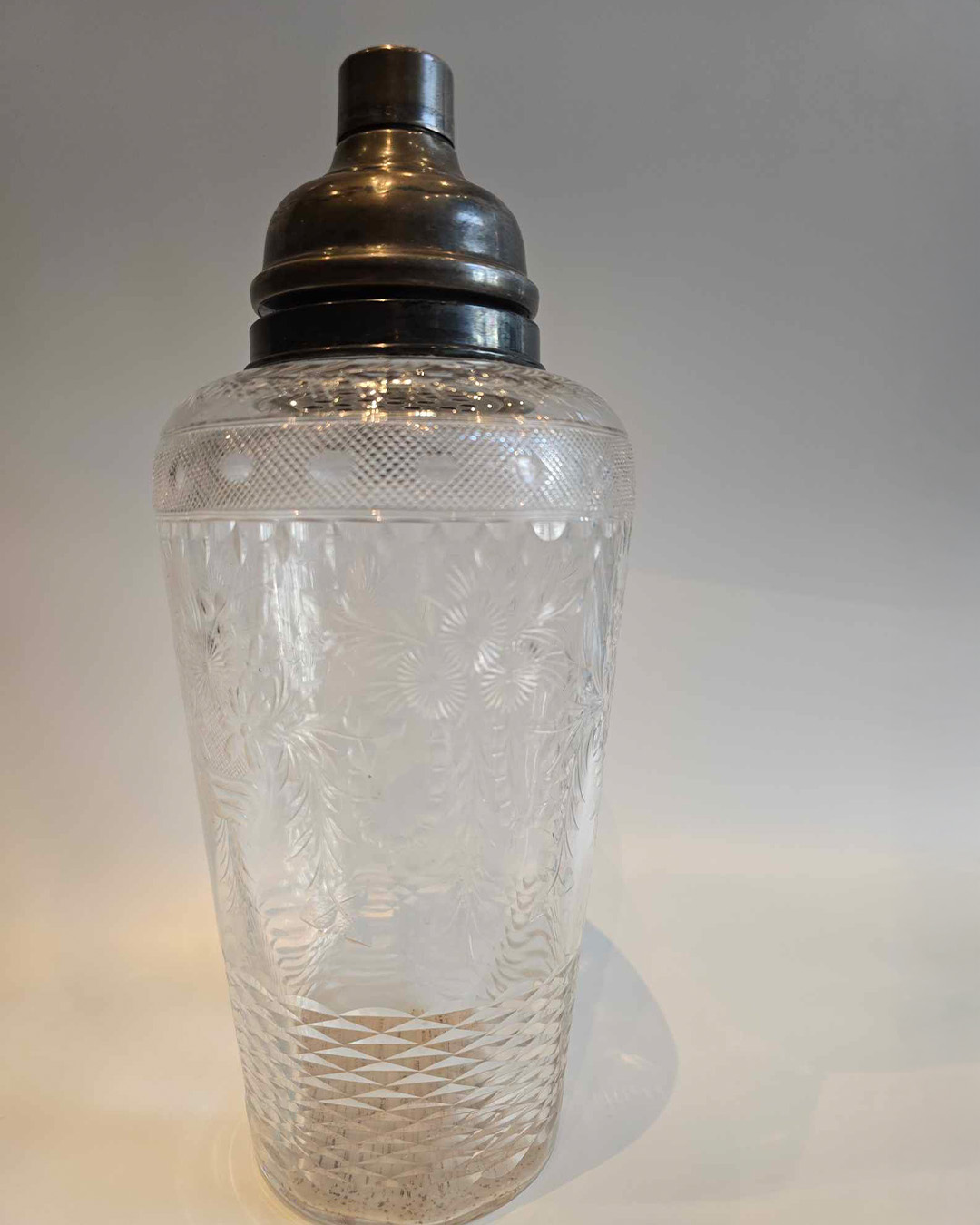
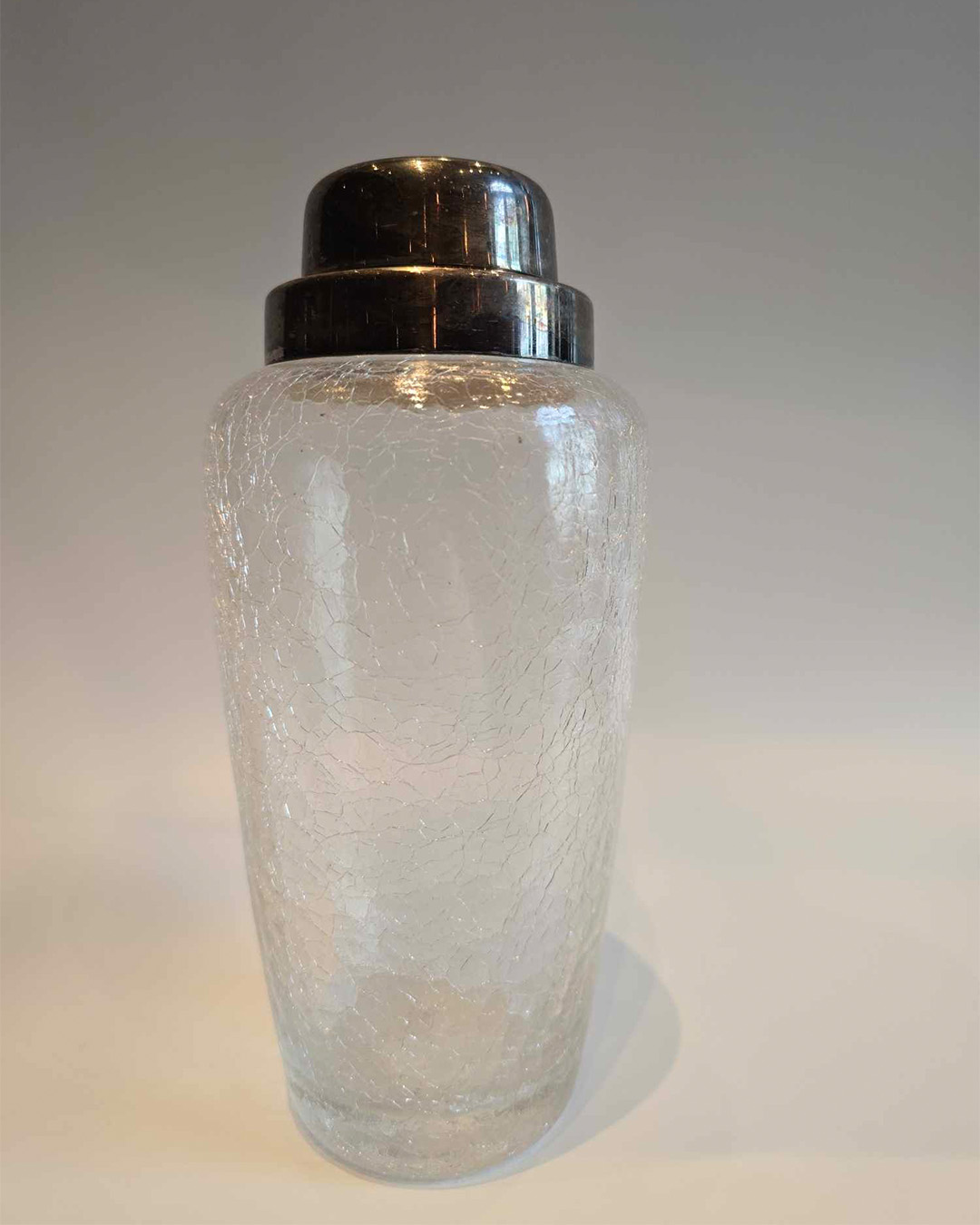
A classic cocktail shaker made by the famous German company Württembergische Metallwarenfabrik, which has been creating unique metal objects since the 1850s. The first cocktail shakers appeared in their offer at the beginning of the 20th century. The one presented dates from the 1960s/70s. It is made of so-called frosted glass, which gives a “shattered glass” effect.
French crystal shaker with a metal overlay with a strainer and stopper. Created between 1930 and 1950, it features simple but beautiful polished motifs.
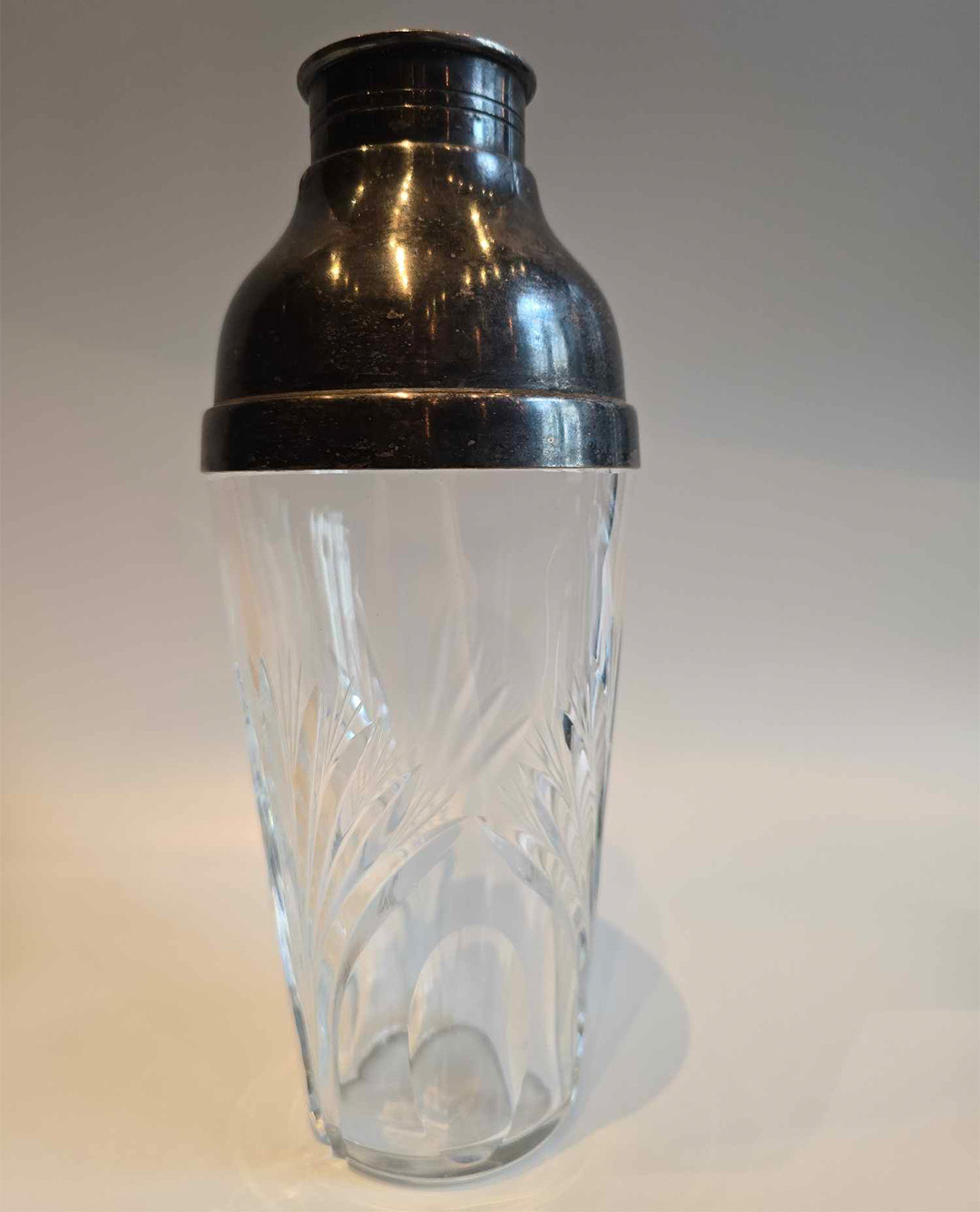
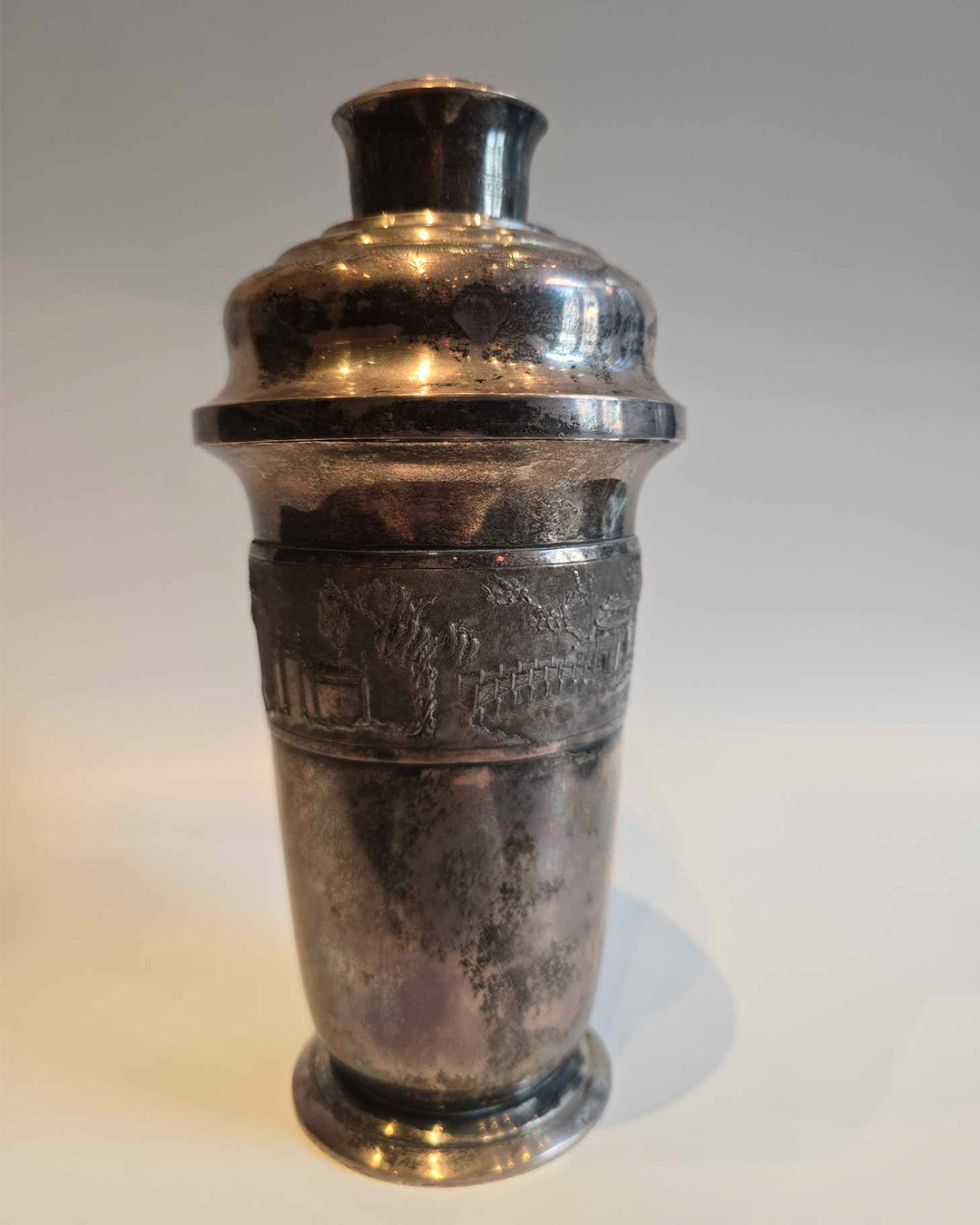
A metal cocktail shaker made in Vietnam. It was created in the 1950s and is made of 900 grade silver. Apart from its beautiful shape, the decoration in the form of a Vietnamese landscape with visible elements of trees and buildings is also unique.
A unique champagne bucket, also known as a champagne cooler, krater, vase, or from English, a cooler. Produced by the Warsaw-based company Norblin, it was part of the equipment of the legendary Oaza restaurant and dancing hall, which was located at Wierzbowa 9. Today, our restaurant Elixir by Dom Wódki operates in this location. A unique item remembering the extraordinary times of pre-war Poland. The “Oaza Varsovie” logo is visible on the bucket.
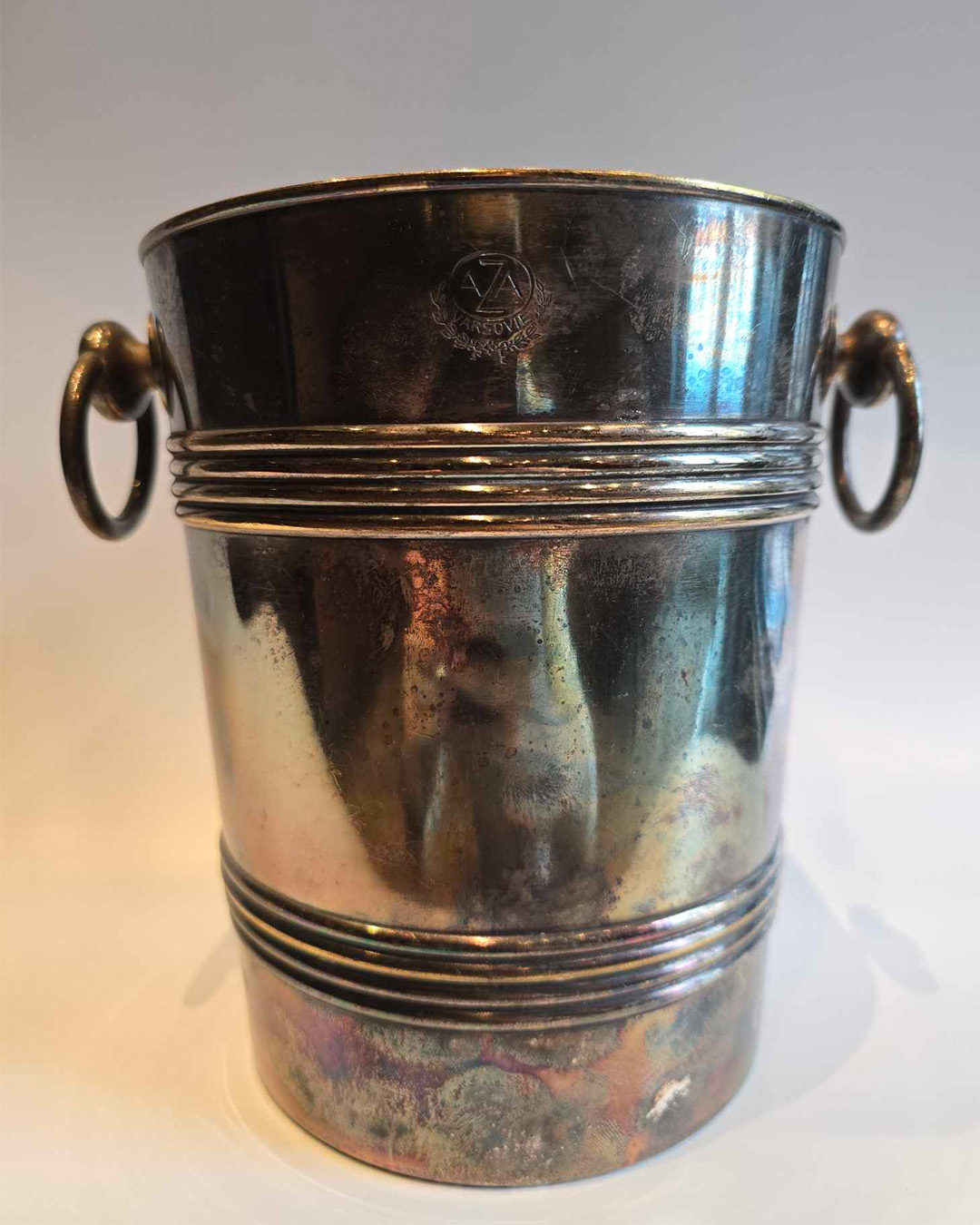
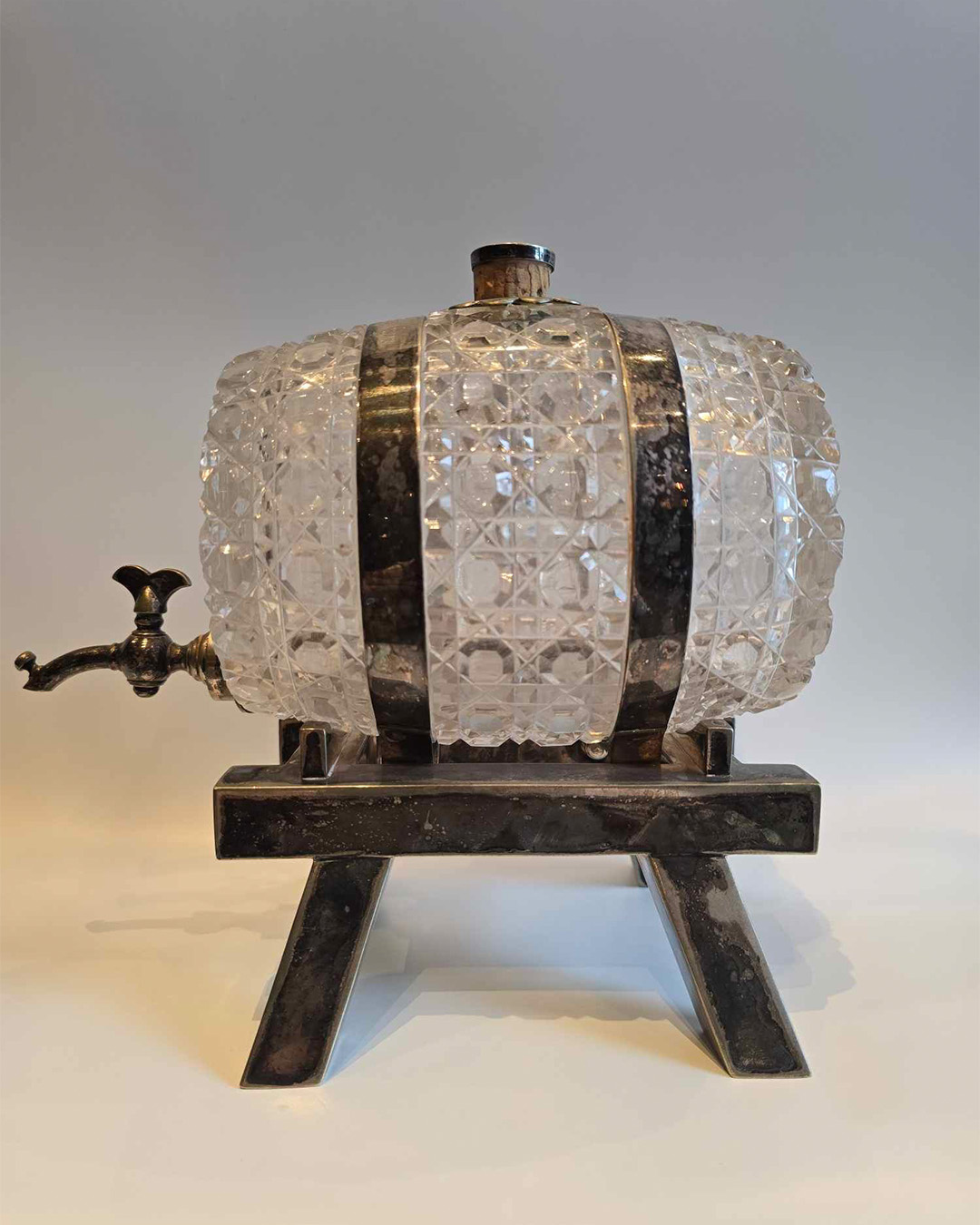
Beautiful crystal barrel for dry alcohol. Made of crystal, it dates from 1922 and was produced in England.
Crystal ice bucket from England. The metal fittings and handle were made of Hawkins Sterling silver.
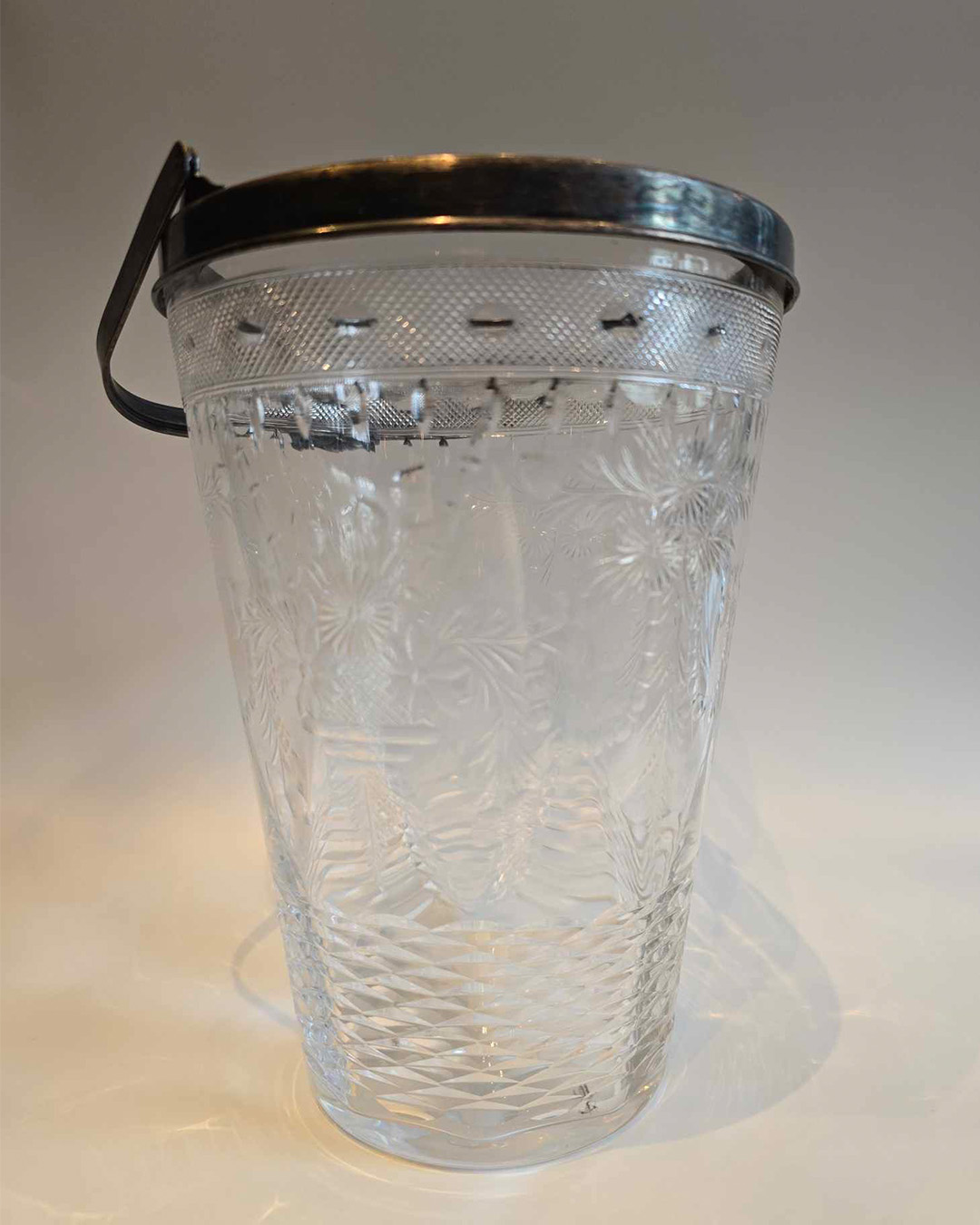
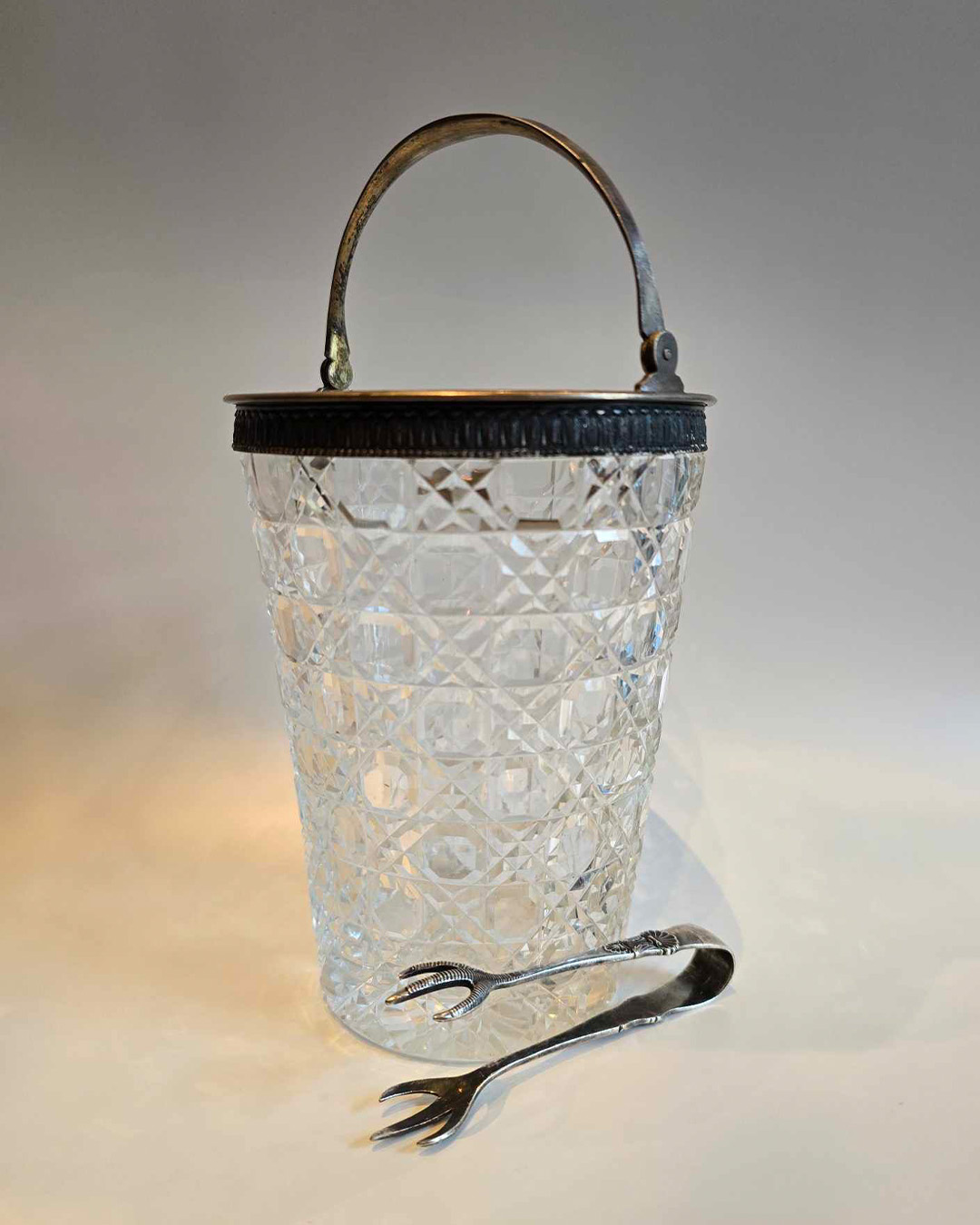
Italian ice bucket with tongs in the form of bird’s feet. Period 1950-1970.
Set of bar measures, so-called jiggers, in the shape of buckets and thimbles. American production from the Art Deco period.

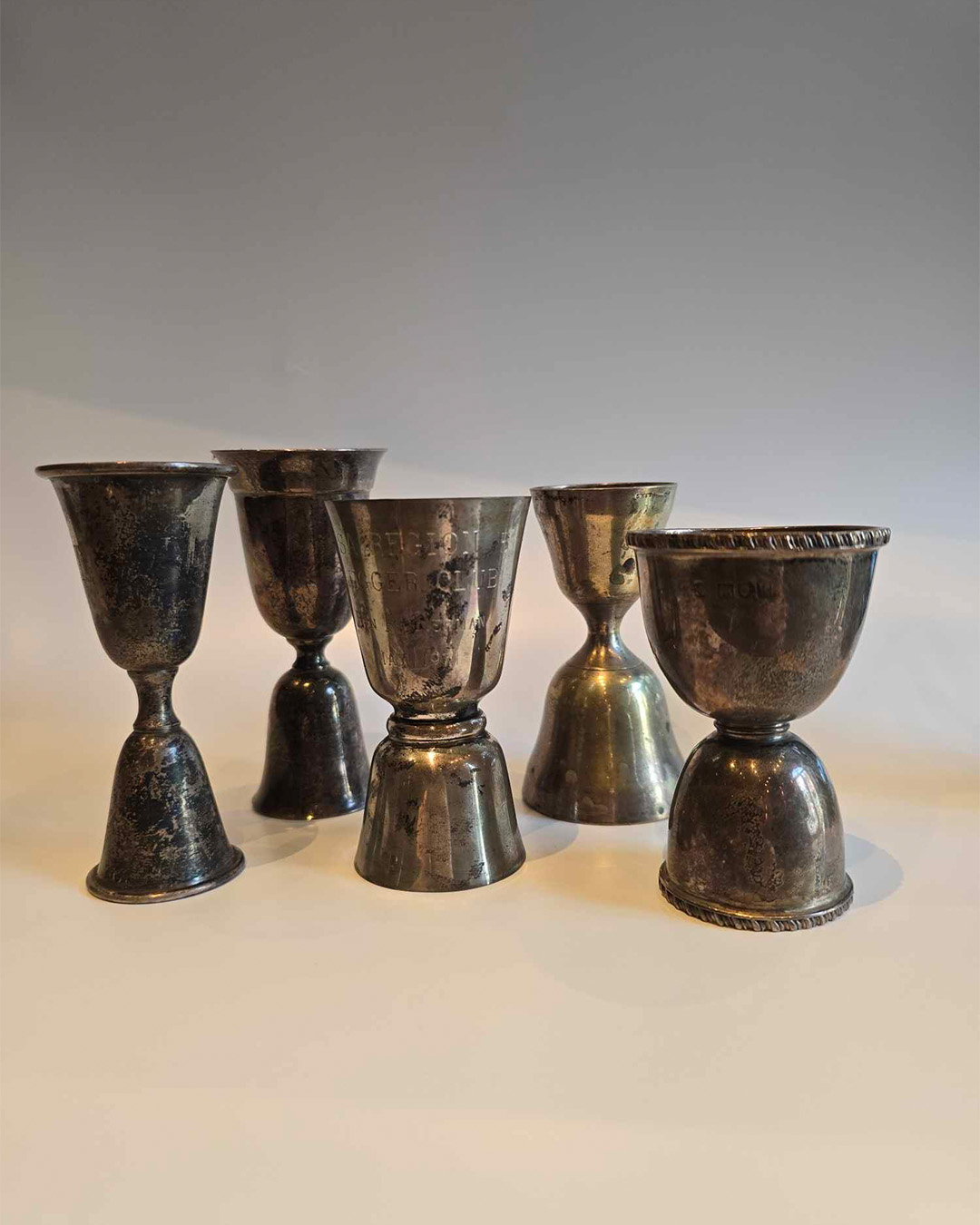
A set of bar measures, also known as jiggers, with a classic hourglass shape. The larger cup measures from 40 to 50 milliliters, the smaller from 20 to 30 milliliters. They were made at the beginning of the 20th century in England, France, and the USA.
Bar measures or shot glasses in the shape of a wolf’s head. Made in England, in the first decades of the 20th century.
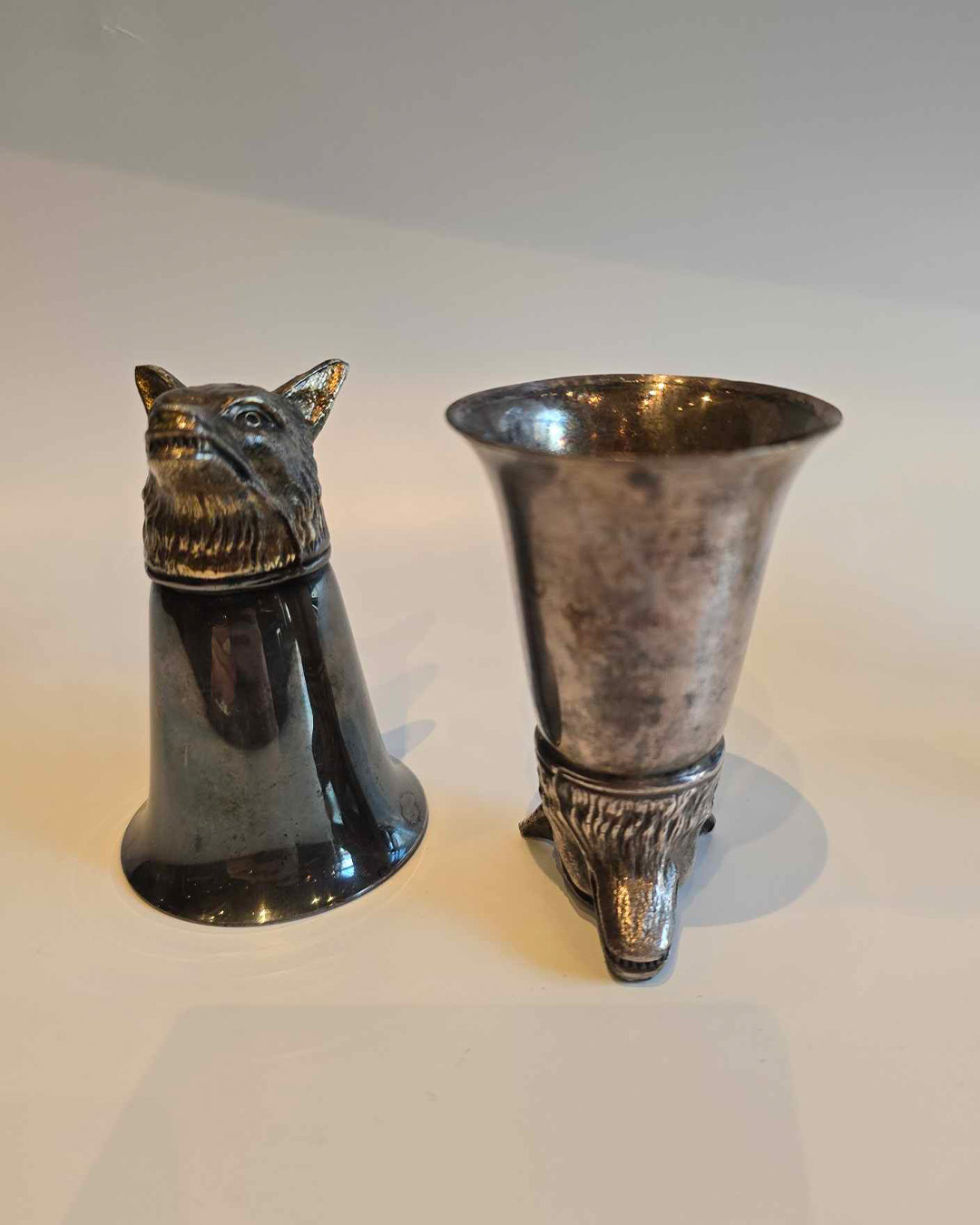
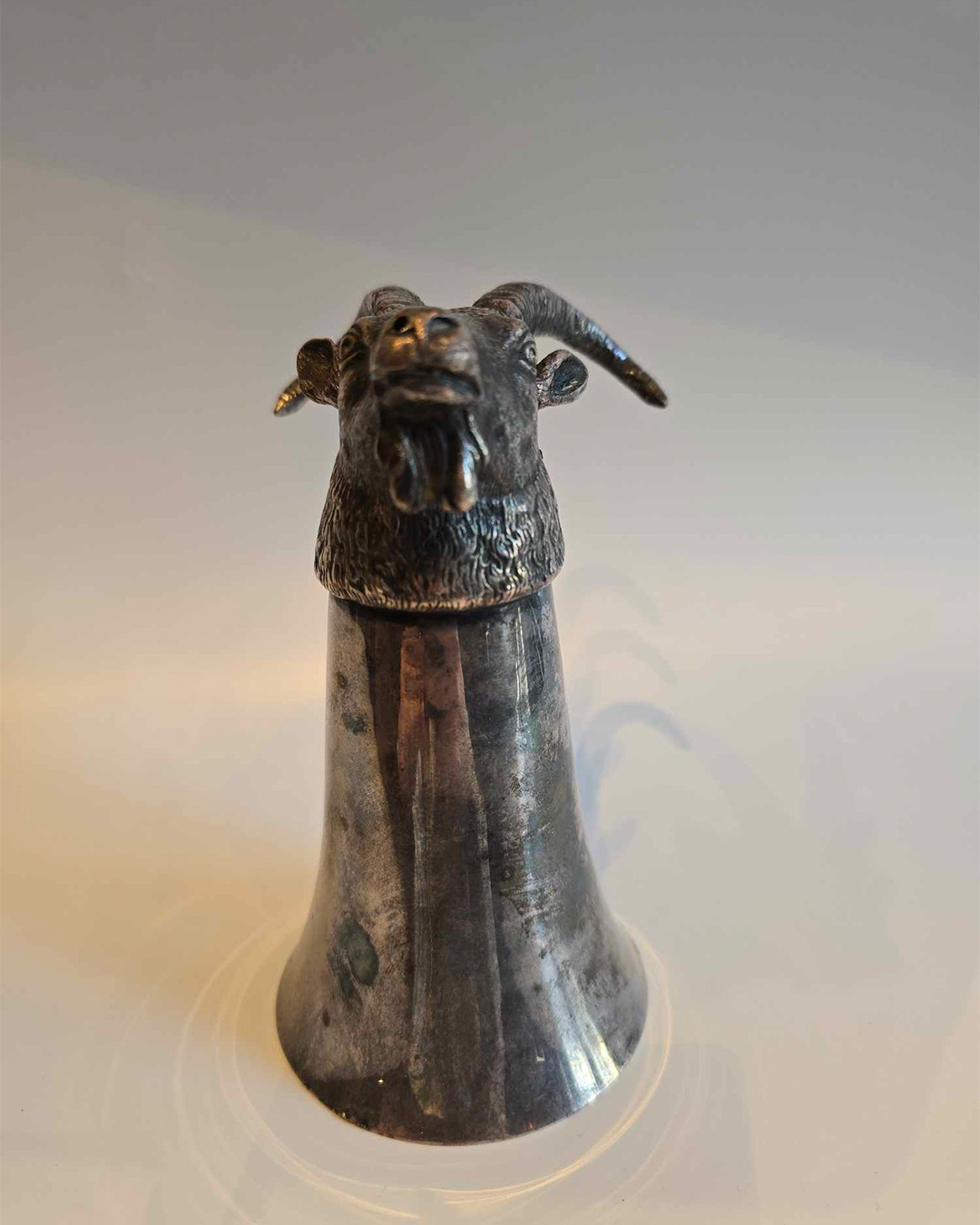
Large metal bowl in the shape of a goat’s head. England, first decades of the 20th century.
A bar measure, also known as a Brazilian style jigger. This is a special type of bar measure that rested on the rim of a glass/cup, then a portion of alcohol was poured in, and by twisting the handle of the measure, it was poured into the glass. It was created in the second half of the 20th century.

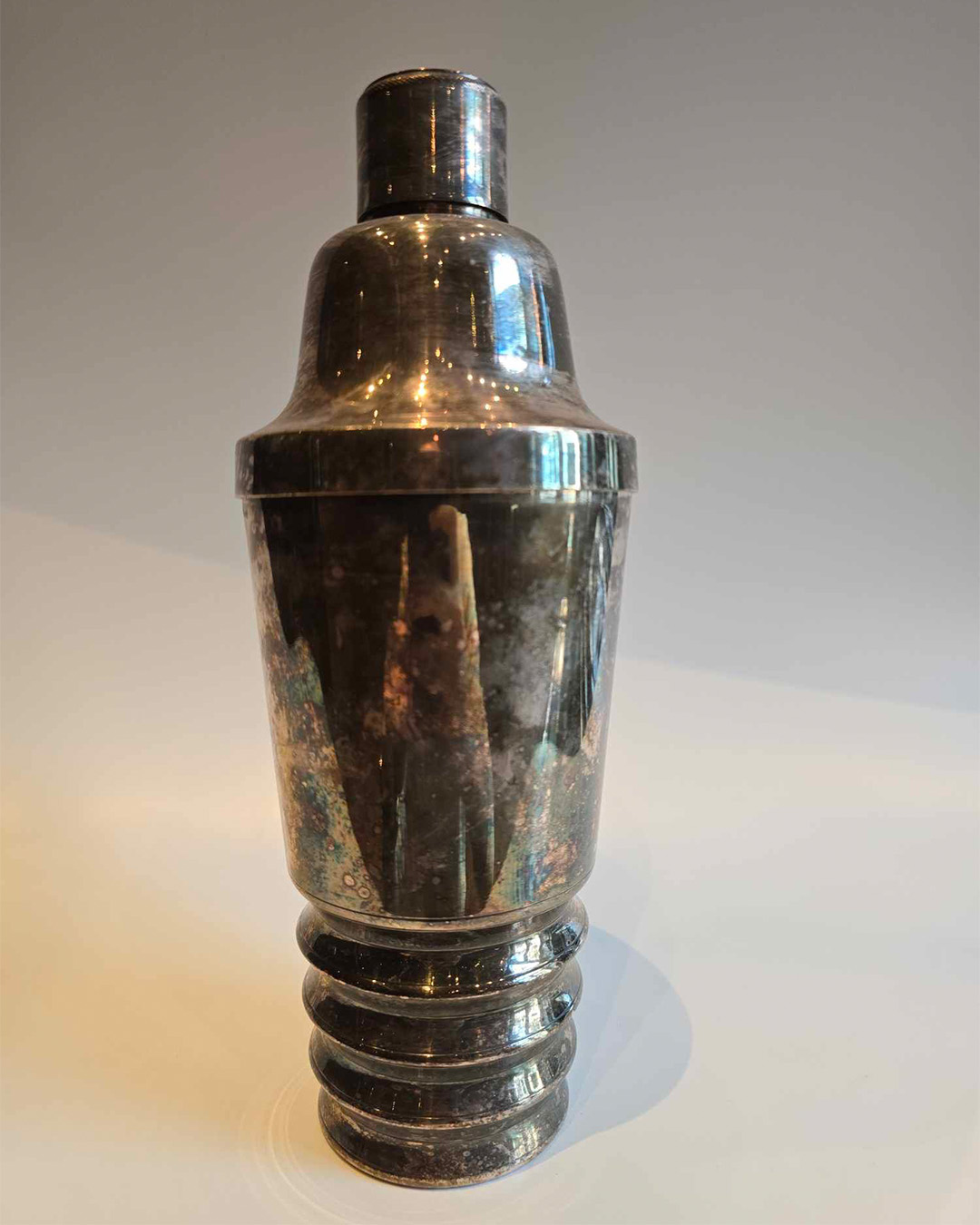
English three-piece cocktail shaker, so-called cobbler. Made by the English company Grenadier in the 1930s.
Bartending guide “The Savoy Cocktail Book”. This bartending guide from 1930 was written by Harry Craddock, who worked as a bartender at the Savoy Hotel in London in the 1920s and 1930s. The publication contains 750 cocktail recipes. The author is also credited with creating the recipe for, among others, the White Lady cocktail. The book itself is adorned with colorful illustrations in the then-prevailing Art Deco style.
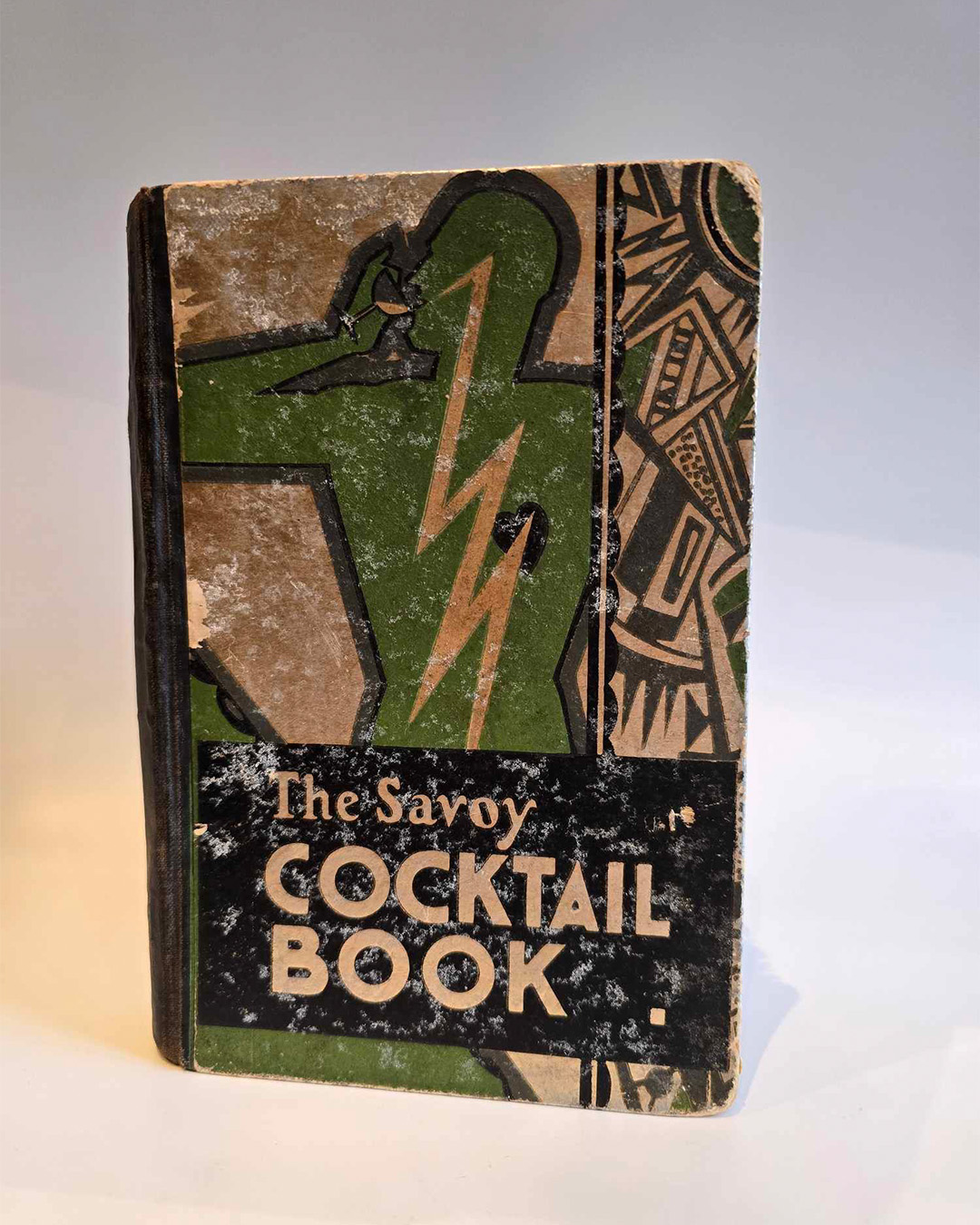
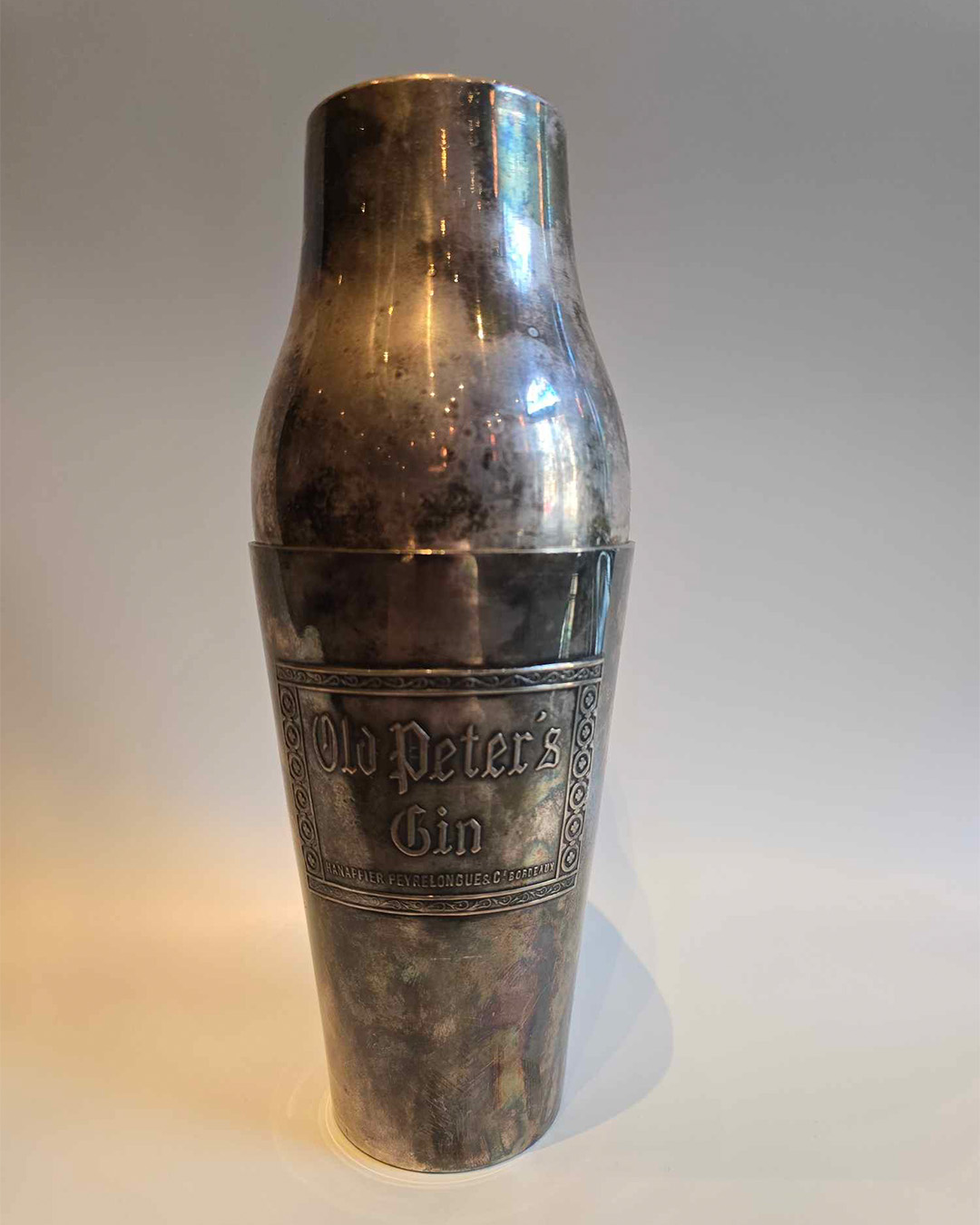
A French-style cocktail shaker consisting of two metal cups. It was developed in France in the 1920s by the renowned company Christofle. It has the marking “HANAPPIER & CIE BORDEAUX” on the bottom and “Old Peter’s Gin” on the main mixing cup.
Bartending guide “Old Mr. Boston De Luxe. Official Bartender’s Guide”. This publication, issued in the 1930s and repeatedly reissued, enjoyed great popularity among American and European bartenders. The guide contains over 100 cocktail recipes and several colorful illustrations.
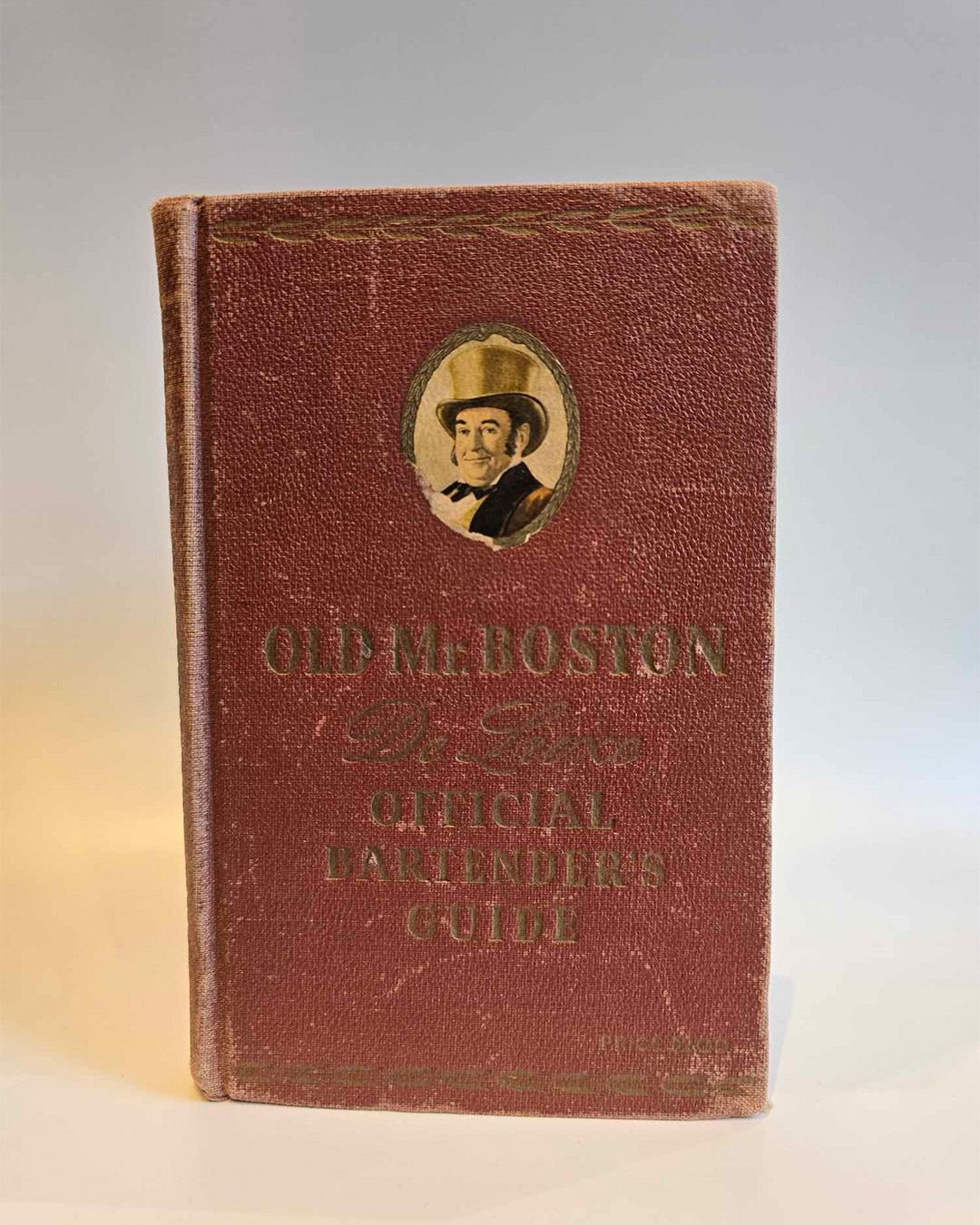
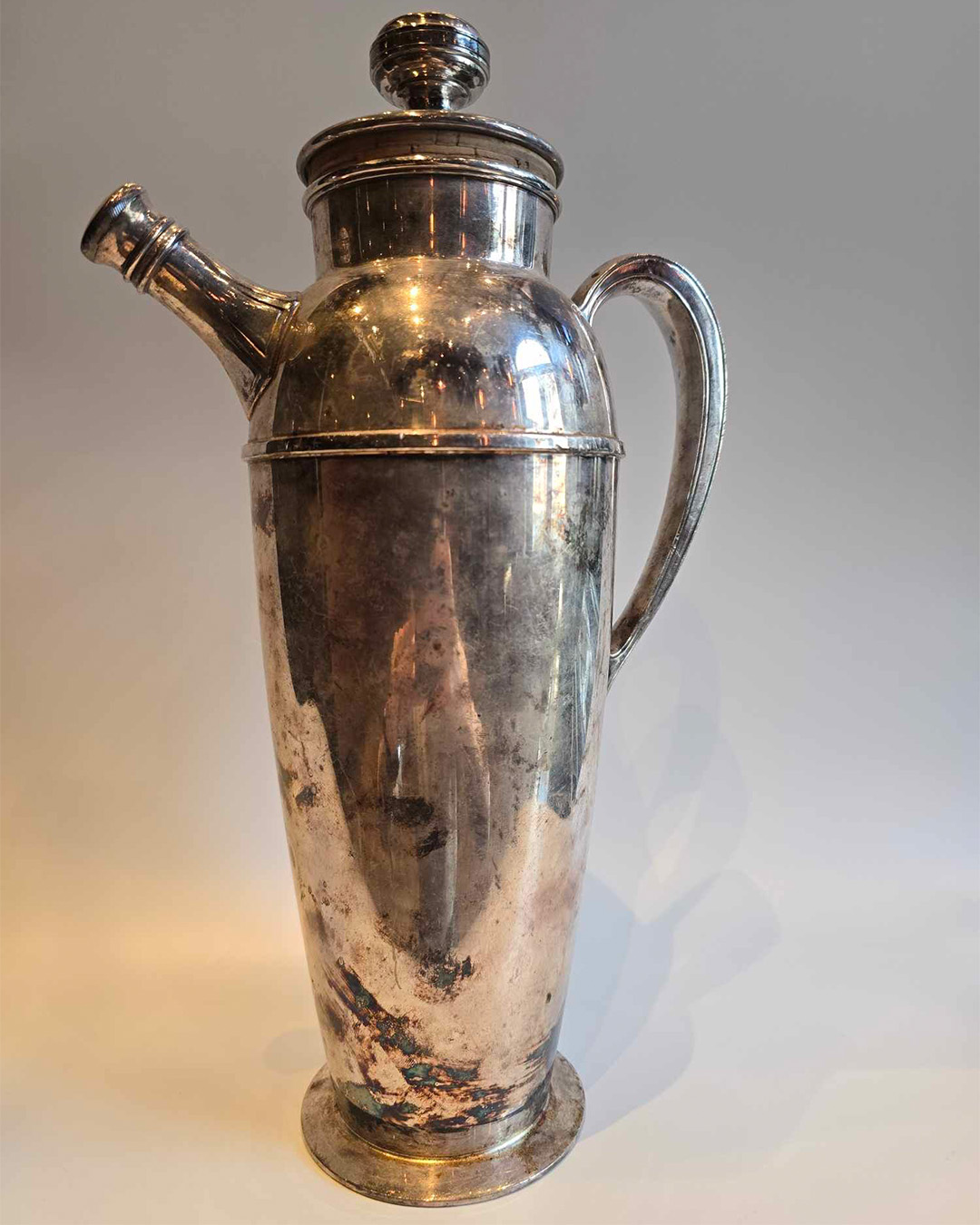
A cocktail shaker in the form of a pitcher. Made by the American company Pairpoint Manufacturing Company, it is a beautiful example of American shakers from the 1930s. This type of shaker is also a cobbler. It consists of only three elements, and the strainer is built into the pouring spout.
Cocktail shaker with recipes. A unique solution to facilitate the work of bartenders. Several cocktail recipes are placed on the mixing cup. An additional fourth element is a cover for the mixing cup with holes that, when rotated, indicate cocktail names and recipes. Le Roy H. Fonton obtained the patent for this shaker and solution in 1935. The shaker was made in Great Britain.

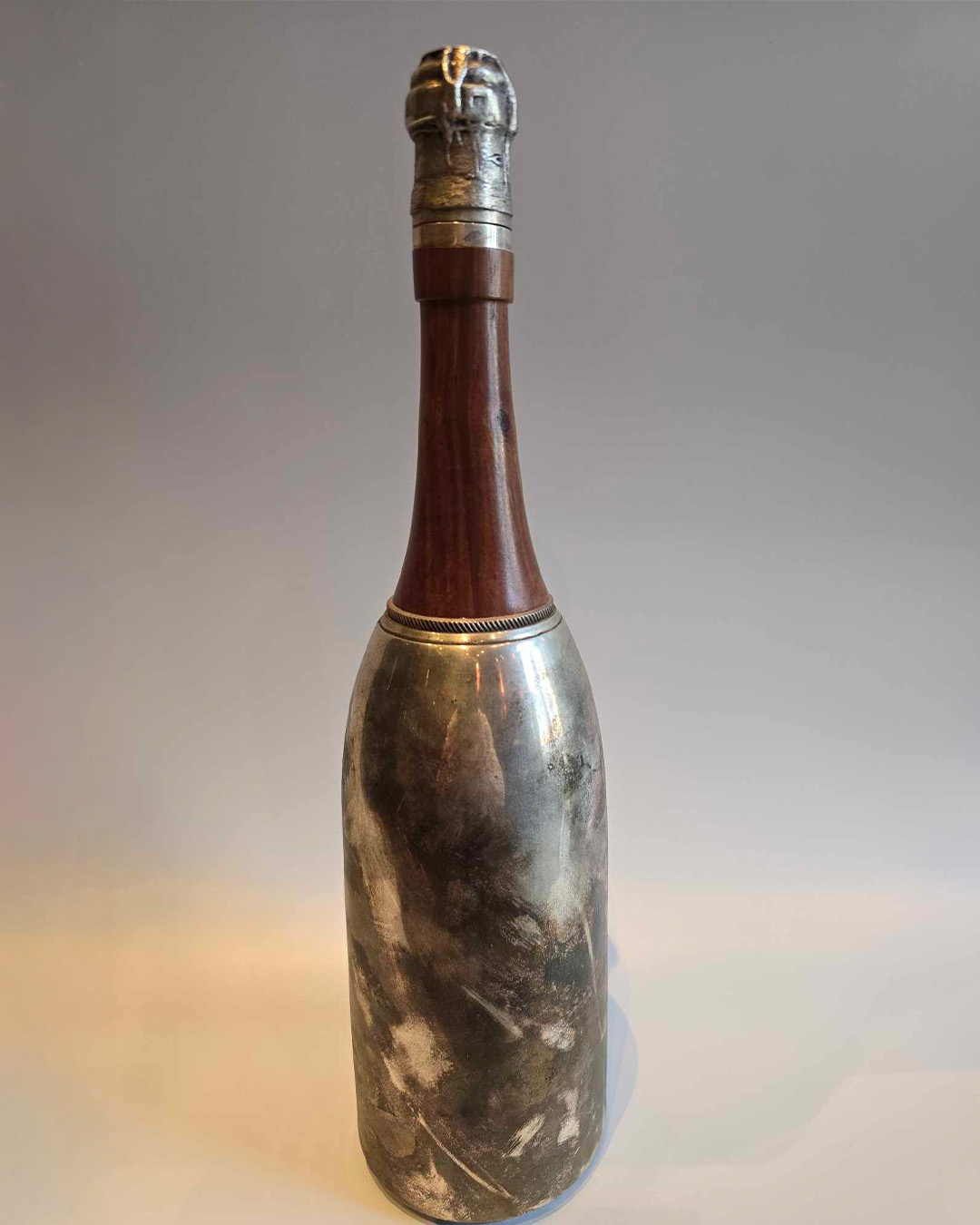
A cocktail shaker in the form of a champagne bottle. It’s a three-piece cocktail shaker with a strainer built into the wooden neck of the bottle. This shaker was created in the 1930s and produced by the American company Crown Silver Co..
A pitcher-shaped cocktail shaker made of brass. It was created at the beginning of the 20th century in the American company Joseph Heinrichs New York.
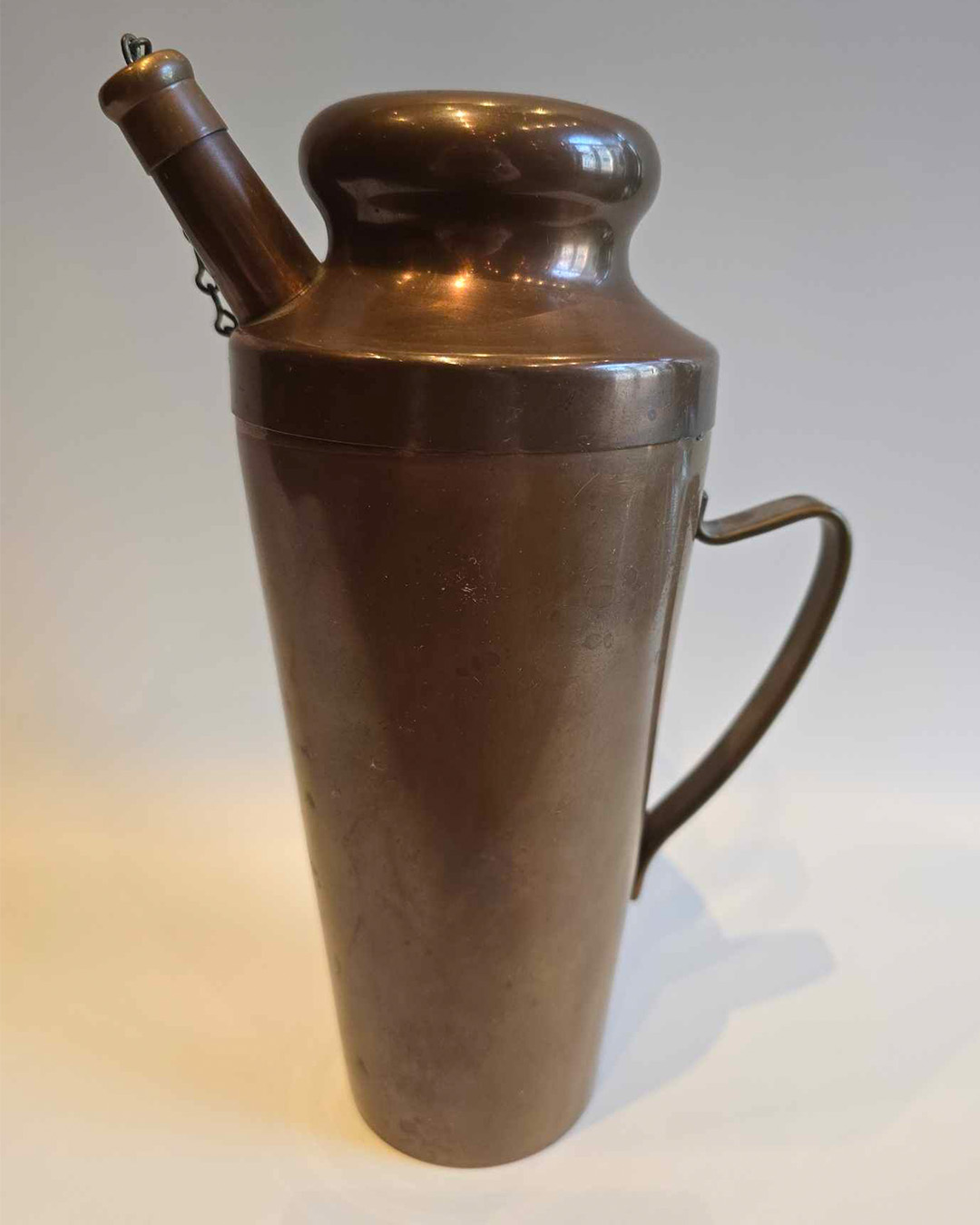

Ice bucket decorated with lion heads. Produced in France at the beginning of the 20th century.
A cocktail shaker in the form of a lighthouse. A contemporary version of a lighthouse-shaped cocktail shaker from 1927.
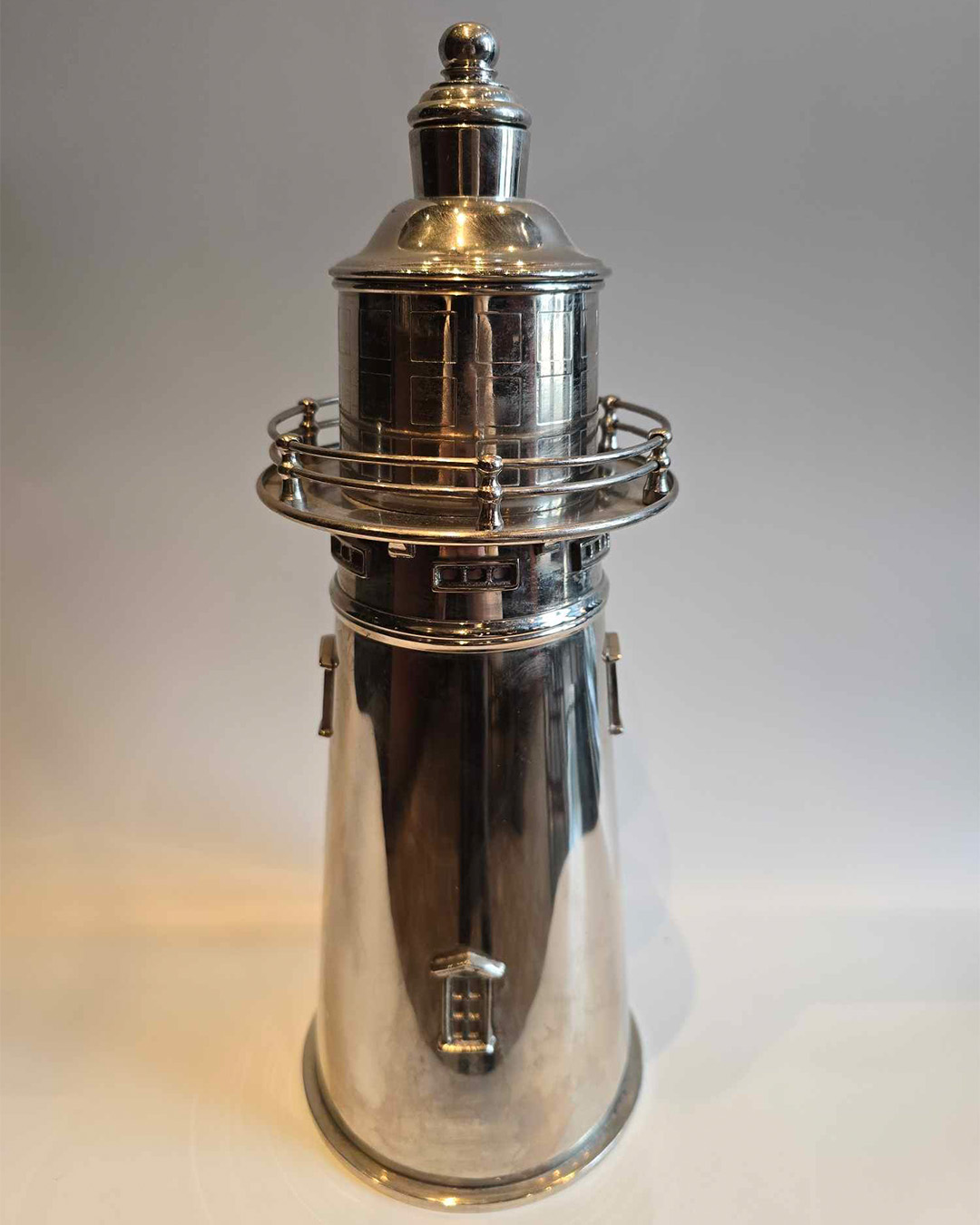

A bartending set in a case produced by Thai Gems Factory Bangkok. The wooden case contains 9 bartending accessories. These include a knife, spatula, skewer, bar spoon, bar strainer, wine opener, corkscrew, ice tongs, and an ice hammer and pick. It was created in the 1970s.
Larger porcelain ice bucket with inscription HJ and date 1896.
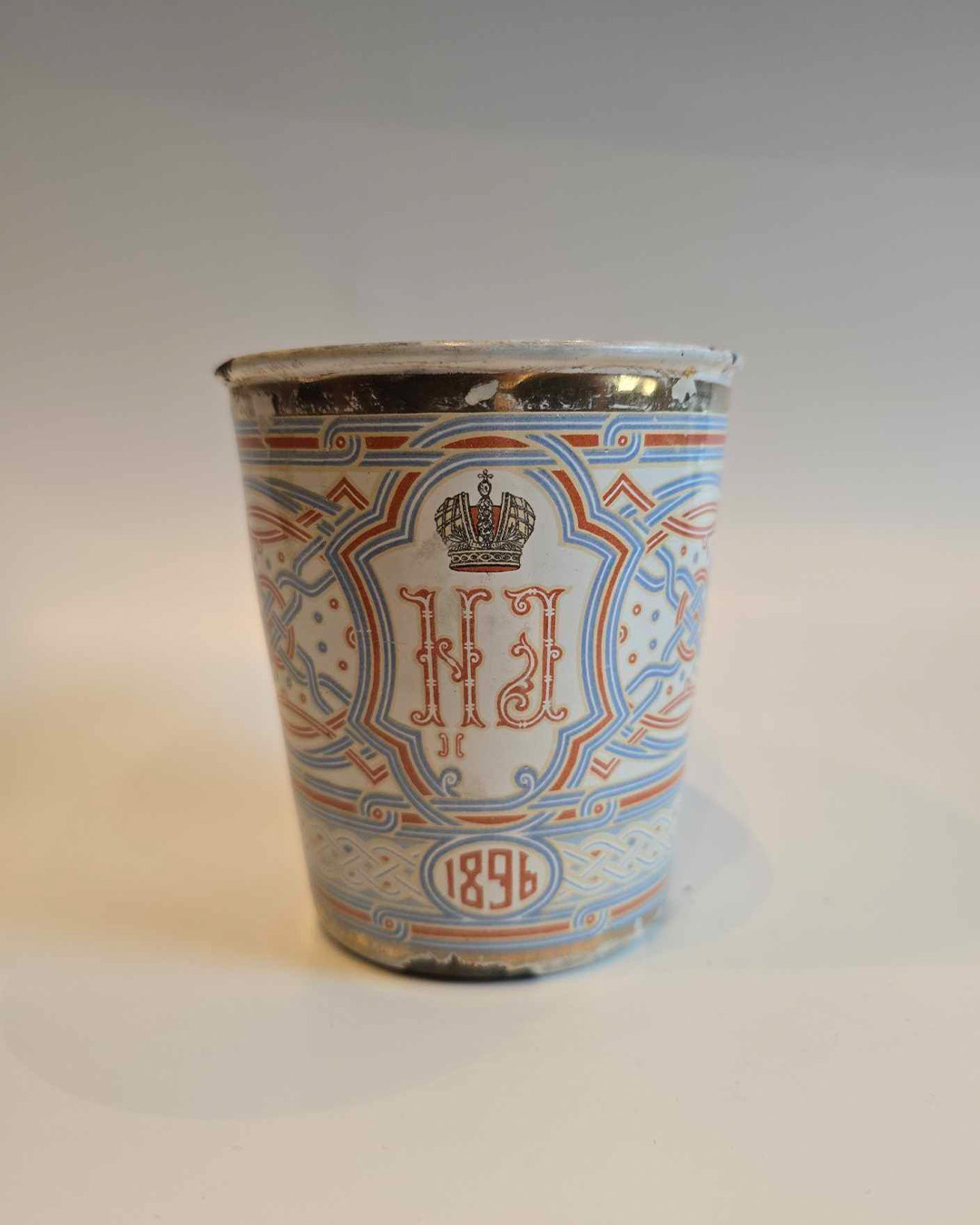

Ice bucket with beautiful floral decoration. Made of bronze in India, between 1950-1970.
A metal pitcher-shaped cocktail shaker made in Italy. It was made from a 95% tin-lead alloy.
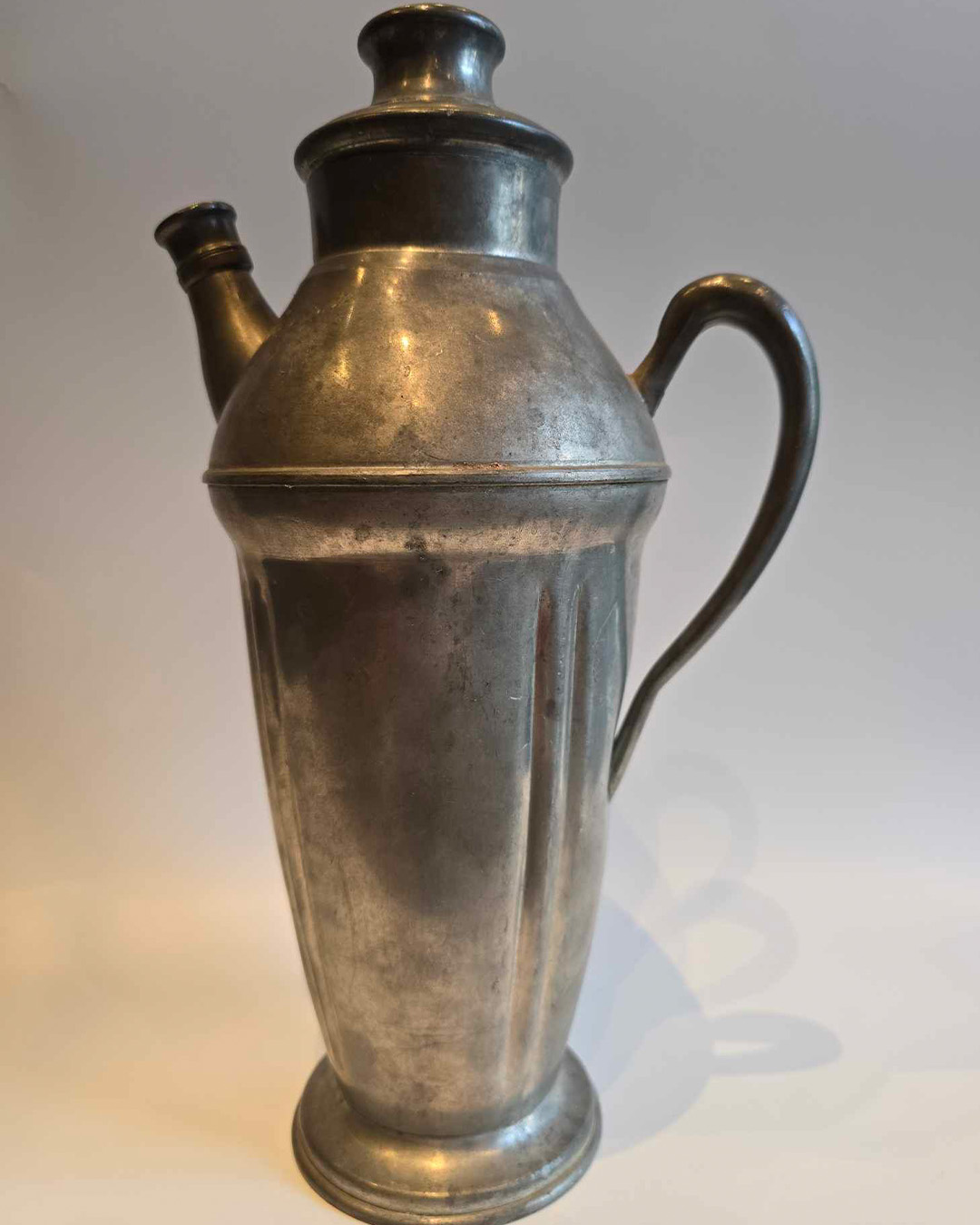
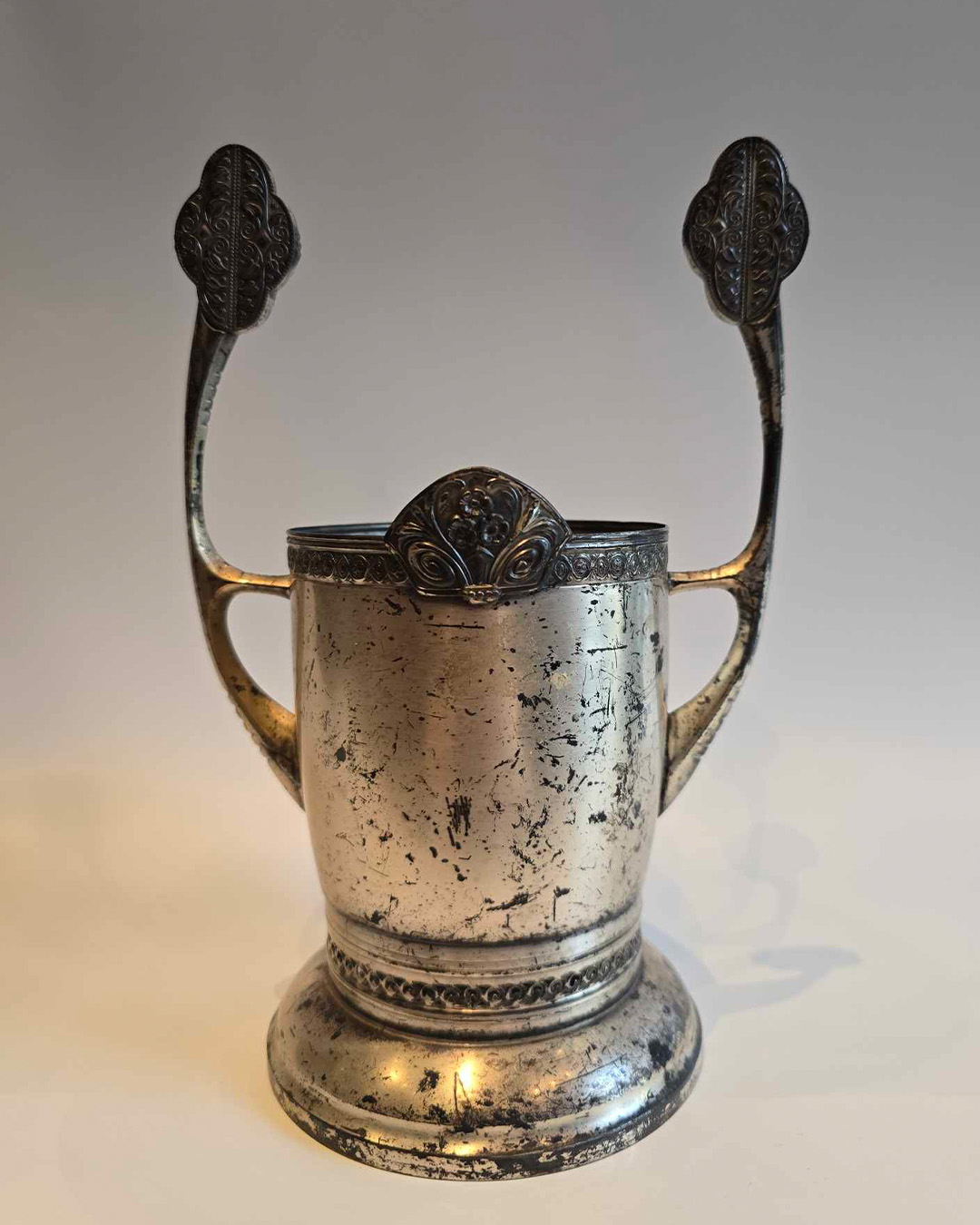
English small ice bucket. Late 19th century.
English cocktail shaker from the 1930s made of tin.
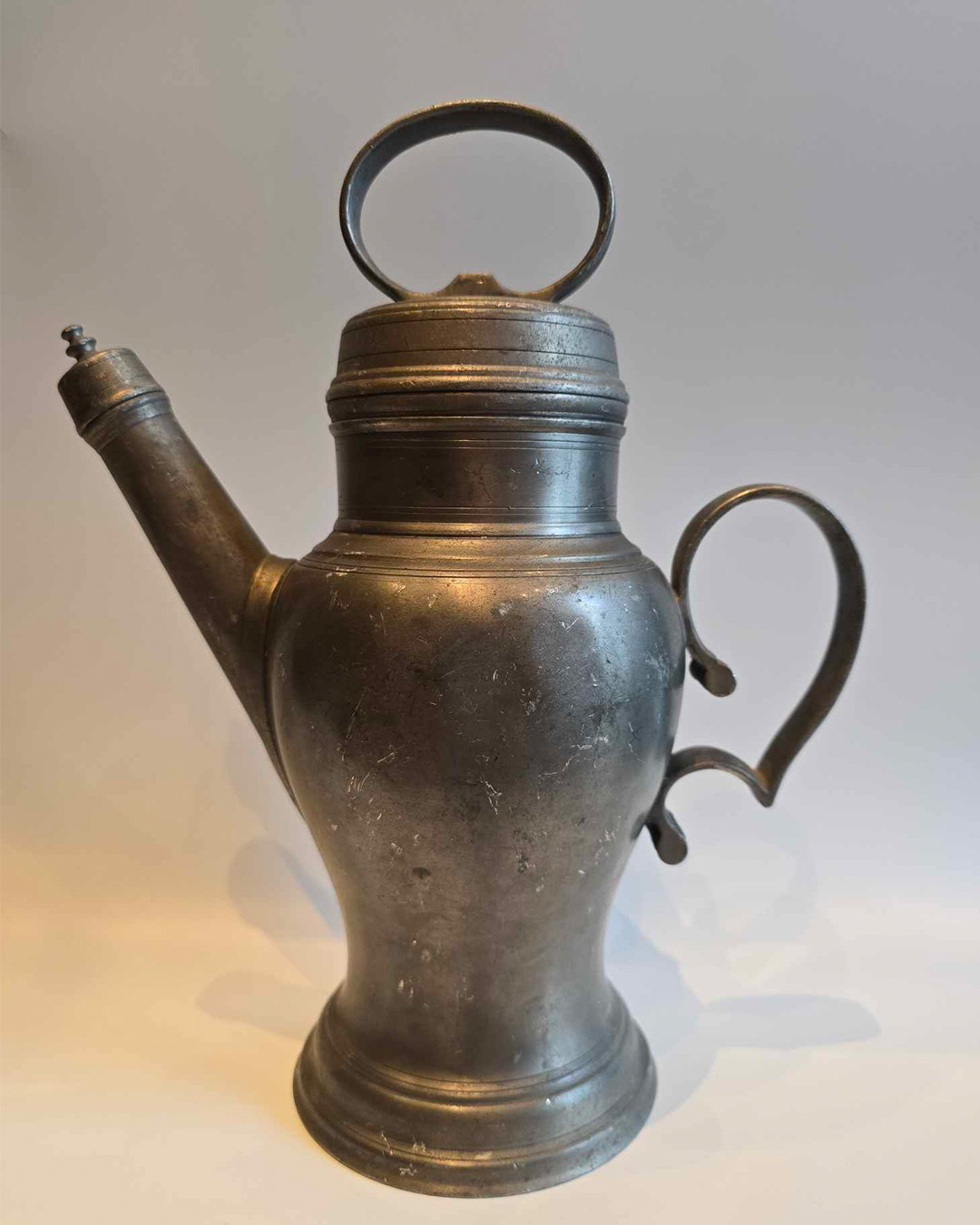
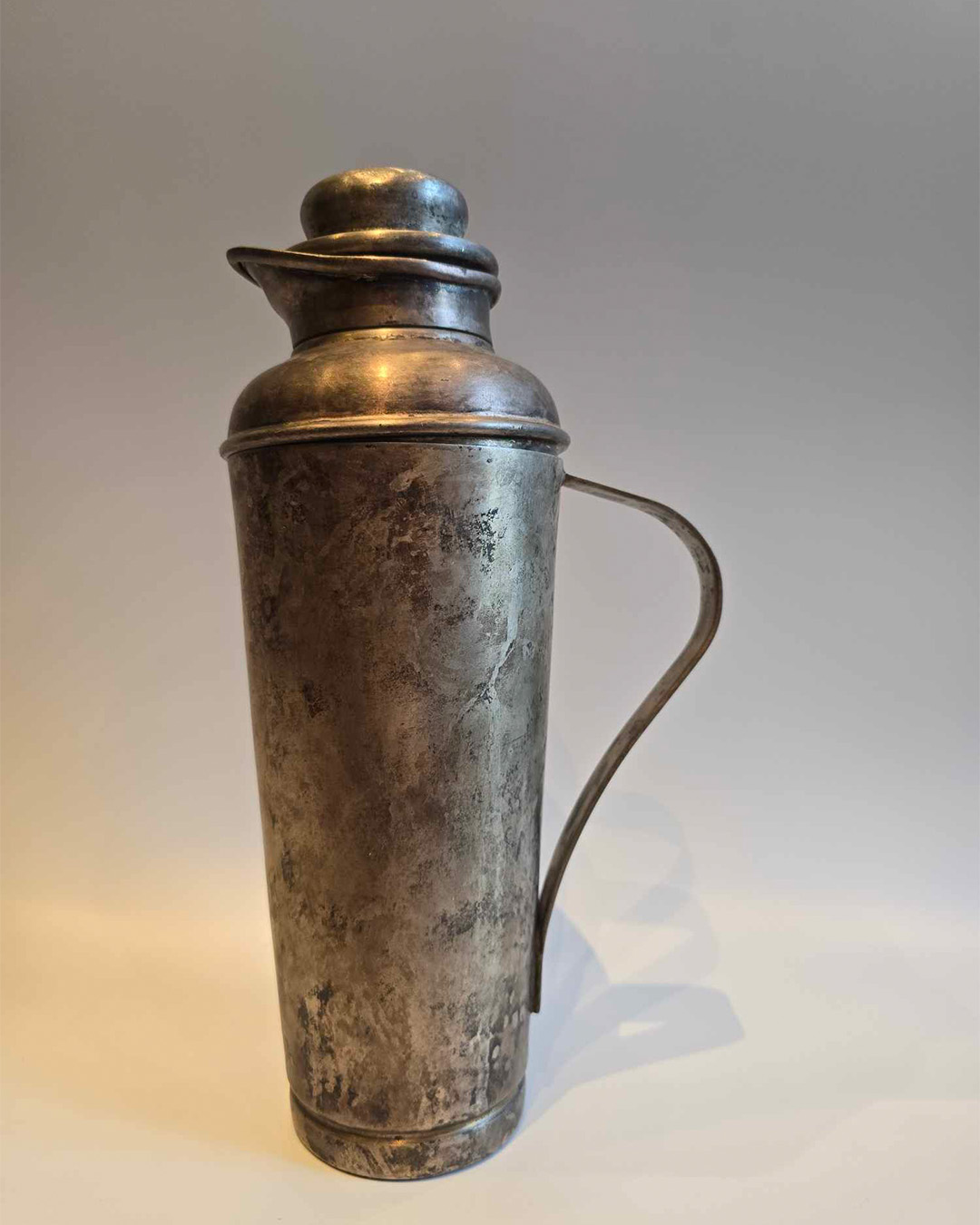
American cocktail shaker produced by the famous Gorham company. 1930s
Danish ice bucket with tongs featuring a beautiful folk motif made by Hans Jensen. 20th century.
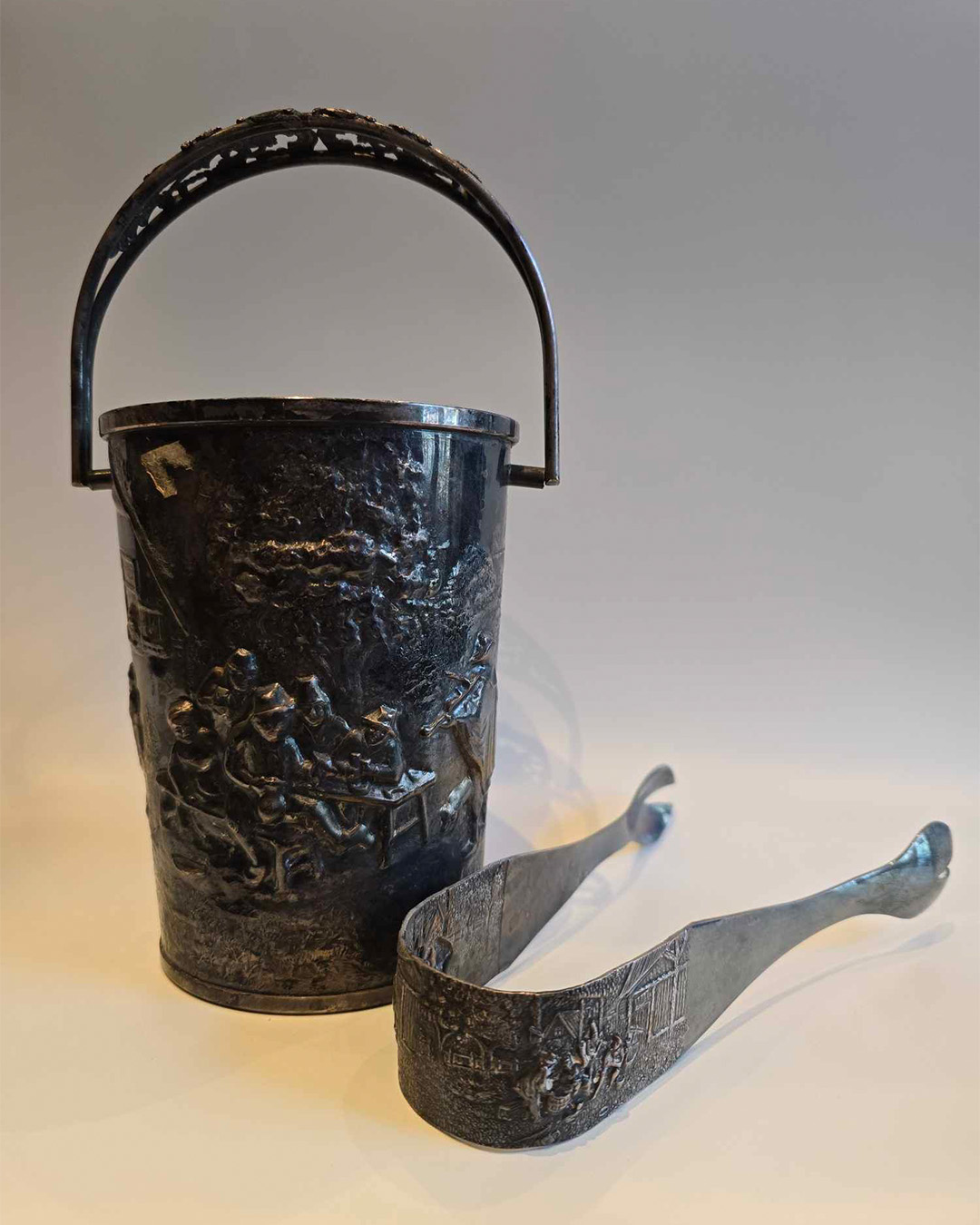

Classic cocktails known today around the world were first written down in a professional bartender’s guide in 1862. Its author is the legendary Jerry Thomas, born in 1830 in the United States, considered the father of global bartending. In 1862, he published the first handbook in the United States (and probably in the world) with hundreds of cocktail recipes and rules on how to properly prepare and then serve them: “Bartenders Guide: How to Mix All Kinds of Plain and Fancy Drinks”.
We are pleased to present you with one of the few surviving copies of the first edition from 1862. This is a true unique item called by bartenders all over the world “The Bartender’s Bible”. Additionally valuable due to the author’s autograph.